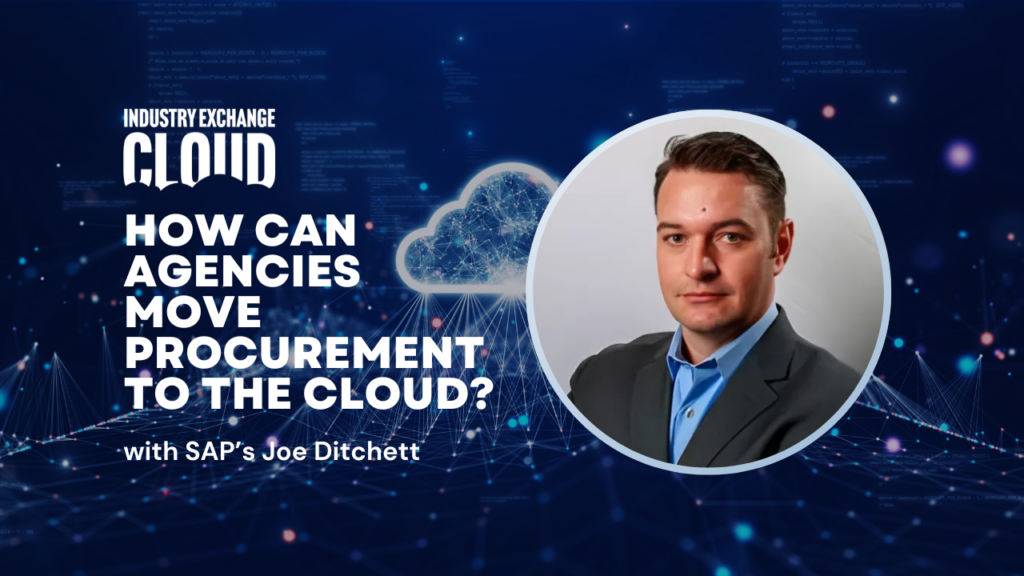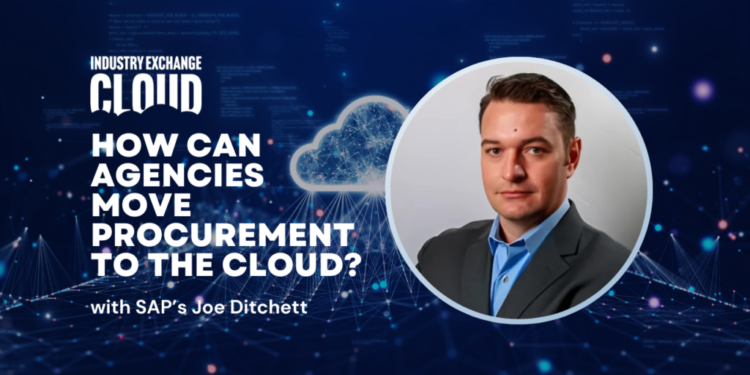
Cloud services are driving a quiet revolution in back office functions at federal agencies. While public-facing customer experience applications like artificial intelligence-driven chatbots get a lot of attention, the real gains agencies are seeing from emerging technologies come from automating business processes within human resources, finance and procurement.
“At the end of the day, what should the government be good at? It should be good at buying goods and services on behalf of the taxpayer and to provide those across the government and across their mission areas,” Joe Ditchett, industry executive advisor for federal civilian and DoD at SAP, said during Federal News Network’s Industry Exchange Cloud 2024.
“Within the IT part of that, we see a lot of agencies and departments are embracing and moving toward cloud procurement and moving away from these old processes that support federal procurement, federal acquisition and taking advantage of what cloud promises.”
Where to start modernizing procurement
Ditchett said he sees the push to modernize procurement processes really picking up steam over the next three to five years. Many agencies already recognize the need, and some have started down the path to cloud-based procurement, he said.
Those agencies are doing research and exploring their options and the potential benefits, especially the use of AI, Ditchett said. He advises those agencies to take an iterative process: Sample, pilot and prototype capabilities to identify how they can apply to the mission, then use those environments as a basis to build out a more comprehensive strategy.
“Once you figure out what your path is in terms of where you’re starting, where your next step is in terms of cloud provider, it’s really best to experiment fast and experiment as early as you can,” he said. “So prototyping and piloting becomes really important. Pick a small-scale use case if you can, and then have an idea of how you’re going to take that and scale it into a more productive way. That gives you a lot of things that you can really build upon in terms of building out a new program for your agency.”
Many agencies already have processes in place to evaluate cloud providers, though smaller agencies may not. But even agencies that have not moved toward procurement as a service might be able to take advantage of shared services organizations that are arising to gain access to cloud services to modernize procurement.
Federal benefits of modernized procurement
Modernizing procurement practices benefit agencies in two ways:
- Ensure taxpayers can get the goods and services they need from government in a more trustworthy and transparent manner
- Let agencies take advantage of their data to make better decisions
“For Congress, and ultimately the taxpayer, to trust and be transparent that we’re executing their dollars in a meaningful way — and that we can account for where it started, where it ended and what happened in the middle — it’s going to be enabled by a lot of these automated processes,” Ditchett said. “And essentially if the AI is acting as a copilot, it will allow the workforce to really see these issues and get ahead of them.”
That’s an important part of this: Human intervention is a necessary feature of these processes. The automation and AI applications need to augment people, helping them to do their work more efficiently and make better decisions by putting more data at their fingertips in a digestible manner with just the click of a button.
As the supply chain becomes more complex and the need for innovation and software development at speed increases, having access to that data helps federal employees interpret the supply chain more easily, seeing the bigger picture while also homing in on key details.
“It’s hard to see the trends when you’re just looking at small things,” Ditchett said. “The ability to kind of step back and look at the bigger picture but still execute the immediate requirement is going to be a real need for a lot of our workforce, and they’ll be able to see these bigger trends and make better decisions when they’re executing on micropurchases.”
Not to mention, younger members of the workforce are coming of age with AI as part of their everyday lives, augmenting how they communicate and interact other digital services. Having these tools already embedded in processes will be a boon to agencies as they try to improve hiring and retention of new employees, Ditchett said.
“The government wants to be a model employer, and the workforce of the future is going to expect a lot of these automations to be readily available to them when they start their job,” he said. “They’re going to expect modern applications, modern technologies, and they want to start day one with them enabled. So the government is going to need to make decisions that support their workforce of the future as well.”
Discover more articles and videos now on Federal News Network’s Industry Exchange Cloud 2024 event page.
Copyright
© 2024 Federal News Network. All rights reserved. This website is not intended for users located within the European Economic Area.






